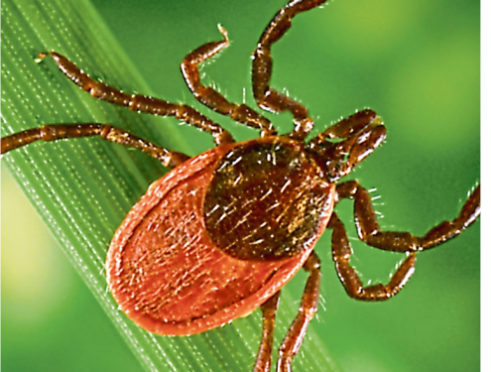Concerns have been raised that visitors and residents in Fife could be more susceptible to Lyme disease over the coming months after the scale of the problem became clear.
Fife’s newly-published joint public health protection plan has revealed there were 31 cases of the dangerous bacterial infection recorded in the kingdom last year – the first time instances of Lyme disease have been properly documented by health professionals in the region.
With Fife Council cutting back on grass cutting and pursuing a policy of ‘rewilding’ areas to preserve resources, there are fears the number of infections could soar as people run more risk of contracting it from tick bites.
The Health and Safety Executive (HSE) estimates there are around 900 cases each year in the UK but some estimates suggest the true figure could be in excess of 10,000.
The issue has been highlighted by Howe of Fife and Tay Coast Conservative councillor Andy Heer.
“With the council not cutting grass in certain areas and letting things grow, I think it’s important people are aware of this and to recognise the symptoms of Lyme disease quickly.”
Lyme disease comes as a result of bites from infected ticks, which are most common in forested areas, heathland, moorland and suburban parks.
The risk of such bites is highest from April to October, when ticks are most active, but it can occur year-round.
The first symptom of Lyme disease is usually a rash, prior to accompanying flu-like symptoms.
In a small number of more serious cases, there can be infection of the nervous system which can lead to viral-like meningitis, facial palsy and even nerve damage.
A spokesperson for Lyme Disease Action, which is working to raise awareness of the disease, pointed to recent studies that suggest more than 10,000 people are affected every year.
“Compared with heart disease and many cancers, 10,000 a year may seem quite small, but even this figure is an underestimate.
“Bear in mind that this is just an estimate of the number of people diagnosed, not the number of people who actually caught Lyme disease.
“Given that in 2018 31% of the cases with positive blood tests were late diagnosed, there is some catching up to do.
“Many GPs don’t think of Lyme disease when someone presents with no memory of a tick bite and with non-specific symptoms that are difficult to pin down and which overlap those of many other diseases and conditions.”










